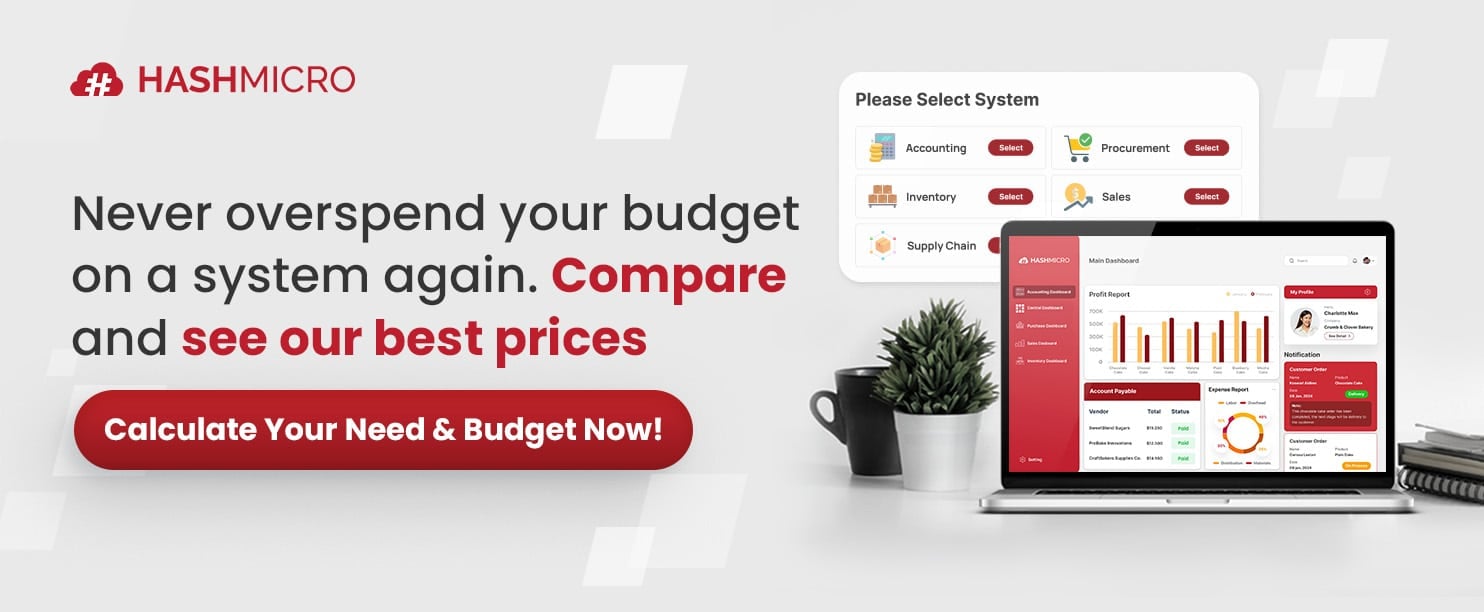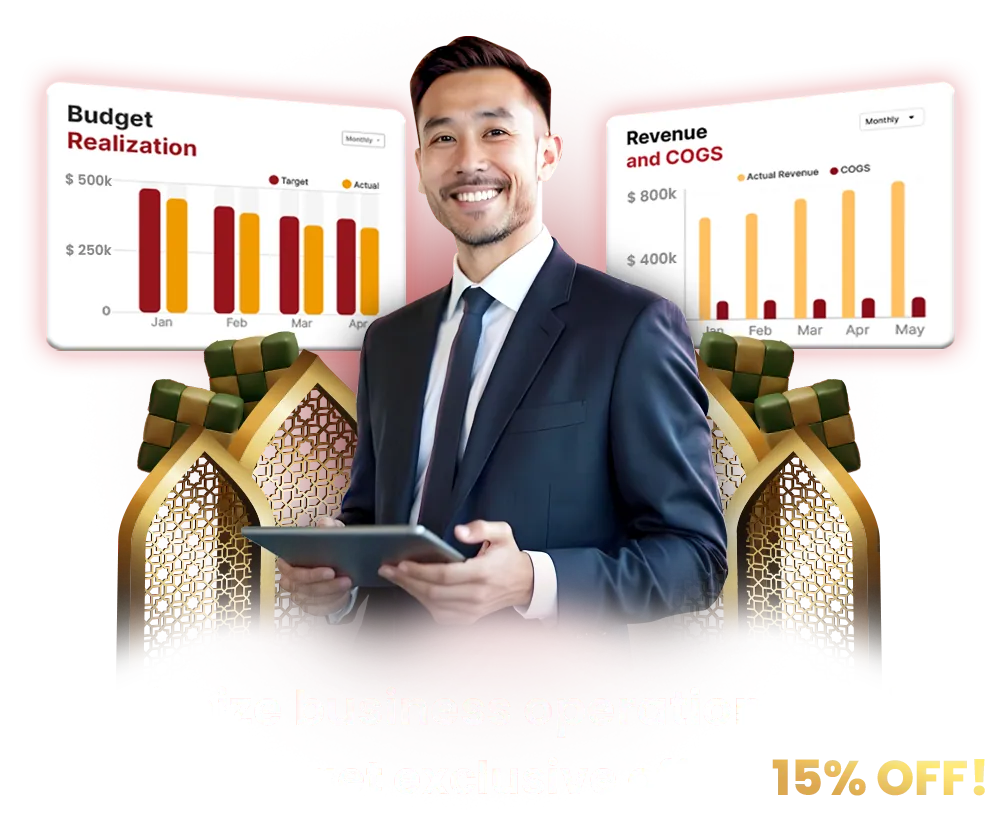Inbound logistics involves receiving, storing, and managing raw materials, while outbound logistics focuses on order processing, packaging, and delivering finished products.
Both are crucial for ensuring a smooth supply chain, but challenges like shipment delays can disrupt operations, increase costs, and impact customer satisfaction.
HashMicro’s Inventory Software automates stock tracking, provides real-time updates, and optimizes logistics processes. Improving efficiency and reducing errors help businesses minimize shipment delays, ensuring timely deliveries and a well-managed supply chain.
A strong understanding of inbound and outbound logistics is essential for effective supply chain management. This guide explores their key processes and how an inventory management system can help businesses overcome logistics challenges including shipment delays.
Key Takeaways
|
Table of Content
Content Lists

What is Inbound and Outbound Logistics?
Inbound logistics is the process of sourcing, receiving, and storing raw materials, supplies, or goods from suppliers. It includes transportation, inventory management, and warehousing to ensure businesses have the necessary materials for production or distribution.
Efficient inbound logistics helps reduce costs, prevent supply shortages, and improve overall operational efficiency.
Outbound logistics is managing the movement of finished products from warehouses to customers. It involves order processing, packaging, shipping, and delivery to ensure that products reach customers accurately and on time.
Effective outbound logistics enhances customer satisfaction, minimizes delays, and optimizes distribution efficiency.
Key Differences Between Inbound and Outbound Logistics
Inbound and outbound logistics serve different functions within the supply chain, each crucial in ensuring smooth business operations.
While inbound logistics focuses on the efficient sourcing and management of raw materials, outbound logistics is responsible for delivering finished products to customers. To better understand their distinct roles, here are the key differences between the two:
| Aspect |
Inbound Logistics | Outbound Logistics |
| Purpose | Manages the sourcing, receiving, and storage of raw materials or supplies. | Ensures the packaging, shipping, and delivery of finished products to customers. |
| Flow of Goods | Goods move from suppliers to warehouses or production facilities. | Goods move from warehouses to customers or retailers. |
| Key Processes | Procurement, transportation, inventory management, and warehousing. | Order processing, packaging, shipping, and last-mile delivery. |
| Main Stakeholders | Suppliers, manufacturers, and procurement teams. | Distributors, retailers, delivery services, and customers. |
Understanding these differences allows businesses to streamline logistics operations, minimize costs, and enhance overall supply chain efficiency.
The Importance of Managing Logistics

Effective logistics management is essential for businesses to maintain smooth operations, reduce costs, and meet customer expectations.
It ensures that raw materials and finished products move efficiently through the supply chain, preventing delays and disruptions.
A well-managed logistics system improves overall efficiency and gives businesses a competitive edge. Here are the key reasons why logistics management is crucial:
- Cost efficiency: Optimizing transportation, storage, and inventory management helps reduce operational expenses. By streamlining logistics, businesses can minimize waste, lower transportation costs, and avoid unnecessary storage fees.
- Improved customer satisfaction: Timely and accurate deliveries enhance the customer experience, leading to higher satisfaction and repeat purchases. Efficient logistics ensures products reach customers without delays, strengthening brand reputation and loyalty.
- Supply chain stability: A well managed logistics system prevents supply chain disruptions by ensuring a steady flow of goods. This reduces the risk of shipment delays, stock shortages, and production halts, which can negatively impact business operations.
- Better inventory control: Effective logistics management helps businesses track stock levels, preventing overstocking or shortages. Real-time inventory monitoring, combined with detailed inventory reports, ensures that companies always have the right products available when needed, improving efficiency and reducing waste.
- Competitive advantage: Companies with strong logistics management can quickly respond to market demands, adapt to changes, and fulfill orders faster than competitors. This allows businesses to improve customer retention and expand their market reach.
How Inbound and Outbound Logistics Work
Inbound and outbound logistics are critical components of the supply chain, ensuring the efficient movement of goods from suppliers to businesses and ultimately to customers.
Each process follows a structured approach, playing a distinct role in maintaining operational efficiency. Below is an overview of how these logistics functions operate:
Inbound logistics process
Inbound logistics moves raw materials, supplies, or goods from suppliers to a company’s warehouse or production facility. The process typically includes:
- Sourcing and procurement: Businesses select reliable suppliers and negotiate contracts for materials or goods.
- Transportation: Goods are shipped from suppliers to warehouses or manufacturing plants.
- Receiving and inspection: Incoming materials are checked for quality and accuracy before being stored.
- Storage and inventory management: Products are organized efficiently to ensure easy access for production or distribution.
Outbound logistics process
Outbound logistics manages the distribution of finished products from businesses to customers, ensuring timely and efficient deliveries. The process includes:
- Order processing: Customer orders are received, verified, and prepared for shipment.
- Packaging and labeling: Products are securely packaged and labeled for delivery.
- Shipping and transportation: Goods are shipped using the most efficient methods, such as trucks, ships, or air freight.
- Last mile delivery: The final step involves delivering products directly to customers or retailers.
Challenges in Managing Inbound and Outbound Logistics
Effectively managing inbound and outbound logistics is essential for a smooth supply chain, but businesses often face various challenges that can impact.
Several obstacles can arise in each process stage from sourcing raw materials to delivering finished products. Below are some key challenges in managing inbound and outbound logistics:
Inbound logistics challenges
- Supplier delays: Late deliveries from suppliers can disrupt production schedules and lead to inventory shortages.
- Inventory management issues: Inefficient tracking of raw materials can result in overstocking or shortages, affecting operational efficiency.
- High transportation costs: Rising fuel prices, shipping fees, and inefficient route planning can increase logistics expenses.
- Quality control problems: Receiving defective or substandard materials can delay production and lead to additional costs.
Outbound logistics challenges
- Order fulfillment delays: Inefficient order processing and packaging can lead to late deliveries and dissatisfied customers.
- Shipping and delivery issues: Unreliable carriers, traffic congestion, and weather conditions can disrupt timely deliveries.
- Rising distribution costs: Expenses related to warehousing, transportation, and labor can put financial strain on businesses.

Manage Inbound and Outbound Logistics with HashMicro
Efficient logistics management is essential for businesses to streamline supply chain operations, reduce costs, and ensure timely deliveries.
HashMicro’s inventory management software offers a comprehensive solution to optimize both inbound and outbound logistics, minimizing errors and improving overall efficiency. Key Features of HashMicro’s Inventory Management Software:
- Automated stock tracking: This feature enables businesses to monitor inventory levels in real time, reducing the risk of overstocking or stock shortages. Automated alerts notify users when inventory reaches critical levels, ensuring timely replenishment.
- Seamless order processing: This feature minimizes human errors and accelerates order fulfillment by automating order verification and processing. It also provides tracking updates, ensuring customers receive their orders on time.
- Optimized warehouse management: Automated stock placement and retrieval achieve efficient warehouse organization, reducing misplacements and delays. This feature also improves storage utilization, making warehouse operations more productive.
- Supplier and vendor management: Businesses can track purchase orders, supplier performance, and delivery schedules, helping them maintain strong relationships with reliable suppliers. This feature ensures timely procurement of raw materials, preventing production delays.
- Real time shipment monitoring: With live tracking of shipments, businesses can proactively manage delays and optimize delivery routes. This feature improves delivery accuracy, reduces transportation costs, and enhances customer satisfaction.
Conclusion
Effective inbound and outbound logistics management is essential for ensuring a smooth supply chain, reducing costs, and improving customer satisfaction. Optimizing procurement, inventory management, and distribution can enhance efficiency and help businesses stay competitive in the market.
However, handling logistics manually can be time-consuming and prone to errors. With HashMicro’s Inventory Management Software, businesses can automate stock tracking, streamline order fulfillment, and monitor shipments in real time.
This comprehensive solution helps reduce operational inefficiencies, minimize delays, and improve overall supply chain performance.
Experience the benefits of a smarter logistics system with HashMicro. Book a free demo today and discover how our software can help you effortlessly optimize your inbound and outbound logistics!

FAQ Inbound and Outbound Logistics
-
What is an inbound process?
Inbound processing is the receiving and putaway of items into your warehouse. It includes the receiving, staging, and putaway of items from incoming orders. Depending on your business processes, the tasks you complete to process inbound orders might vary.
-
How do you manage outbound logistics?
There are many factors that contribute to successful outbound logistics. These include optimising inventory management, order management, packaging procedures, and distribution networks. Ensuring each order is prepared and delivered on time and in full is crucial to your business success
-
Is picking inbound or outbound?
Inbound process: Choose suppliers, place orders, coordinate transport, inspect goods, and manage storage. Outbound process: Validate orders, pick and pack products, arrange shipping, and provide customer service.































